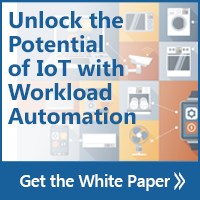Three Factors for Bimodal IT
There is a lot of discussion around the concept of bimodal IT lately, but what exactly is it? Is it actually something new or is it one of those many things in the tech world that is something old with a new name? And what are they key components needed to adopt a bimodal approach?
In a recent Forbes article, titled
Bridgwater starts off by explaining what bimodal isn’t and what it is: It isn’t a divide between mobile and desk-based technologies, but it is an approach where we segment technologies based on things like software application requirements and maturity.
In our previous post on Gartner’s definition of bimodal, we explained the two approaches behind mode 1 and mode 2. According to Gartner, Mode 1, or traditional IT, is focused on reliability, safety, and approval-based governance, while Mode 2 is an agile, non-traditional approach centered on rapid, continuous development. This decoupling of IT is supposed to produce a few benefits, one of which is the ability to keep legacy systems running while still making time for innovation with new technologies or applications that can potentially integrate with the Mode 1 infrastructure in place.
What is Needed for a Bimodal Approach?
According to Bridgwater, it’s automation: “Automation in practice means management software with functions like a job library — this is a kind of directory where developers will find hundreds of production-ready templated job steps that are self-documenting.”
Tools like production-ready templated job steps provide for the type of drag-and-drop development Mode 2 teams need to move faster and innovate, while also giving Mode 1 teams an easily maintainable tool that is self-documenting.
At Advanced Systems Concepts, we tend to agree with this. In talking to users and IT leaders at conferences, we’re seeing the bimodal approach, and variations of it, are gaining traction much more rapidly than a year ago. As a result, organizations are using software automation in different ways than they have in the past to be more agile and manage this bimodal approach.
Bridgwater concludes by noting automation isn’t a cure-all. “It throws up thorny issues relating to governance & control and does not fit all sizes…but its existence (and current popularization) is testimony to the way we are becoming more cloud-centric, more Agile-centric and more componentized and modular in terms of our approach to software.”
Read the full article here.

